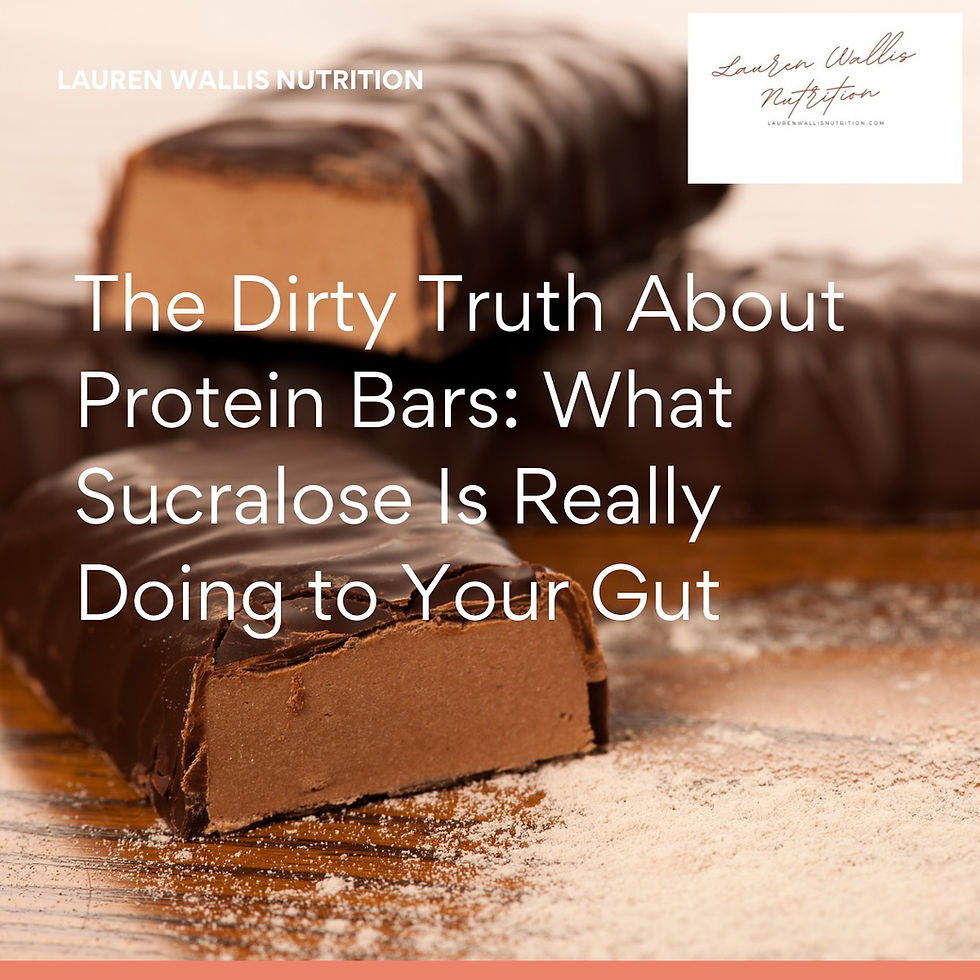Sucralose, Quorum Sensing Disruption, and Hypothalamic Interference: An Underestimated Metabolic Risk
- Lauren Dyer
- Jul 15
- 2 min read

Sucralose is widely assumed to be biologically inert - a simple way to enjoy sweetness without the metabolic cost.
However, a growing body of research challenges that assumption, particularly in relation to gut-brain signalling and microbiome-host communication.
From a gastrointestinal perspective, sucralose has been shown to disrupt quorum sensing - the chemical language used by microbes to coordinate behaviour such as colonisation, virulence expression, and biofilm formation.
A 2023 study in Frontiers in Microbiology reported that sucralose altered microbial gene expression in pathways linked to quorum sensing and xenobiotic metabolism, with downstream effects on the gut-liver axis and detoxification capacity.
This disruption may impair the function of beneficial species such as Lactobacillus and Bacteroides, reduce production of short-chain fatty acids, and favour dysbiosis. Over time, this could influence gut permeability, immune tolerance, and inflammatory tone - especially relevant in individuals with existing metabolic or histamine-related dysfunction.
Beyond the gut, several animal studies suggest that sucralose can interfere with appetite regulation at the level of the hypothalamus. Unlike glucose or fructose, sucralose activates sweet taste receptors without delivering caloric energy. This mismatch appears to confuse hypothalamic sensing mechanisms, leading to increased hunger signalling, reduced satiety, and in some cases, altered expression of genes involved in energy homeostasis.
A well-known study published in Cell Metabolism (2016) found that non-nutritive sweeteners such as sucralose enhanced food motivation and disrupted normal neuronal reward pathways in both flies and mice. These findings suggest that regular exposure may not only fail to assist with weight management but may actually compound metabolic dysregulation through disrupted signalling inputs.
Clinically, this presents a challenge.
Sucralose is no longer confined to diet drinks. It is now routinely included in flavoured electrolyte powders, protein bars, functional gummies, and many “wellness” products marketed as clean.
The focus should not only be on caloric load or glycaemic index, but on the molecular signals these additives send. In functional nutrition, inputs that confuse physiological regulation, however subtle, can have disproportionate downstream consequences.
Those with impaired detoxification, microbiome imbalance, or hormone resistance, its cumulative effects may be far from benign.
Lauren Wallis Dyer
BSc Nutritional Biochemistry | MSc Medical Molecular Biology
DipCLN | IFMCA | PHC Ambassador |
hashtag#FunctionalNutrition hashtag#MicrobiomeHealth hashtag#HypothalamicRegulation hashtag#QuorumSensing hashtag#MetabolicFlexibility hashtag#GutLiverAxis hashtag#NonNutritiveSweeteners hashtag#Sucralose hashtag#ClinicalNutrition hashtag#HormonalHealth hashtag#PersonalisedNutrition hashtag#MitochondrialFunction hashtag#Inflammation

Comments